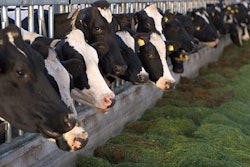
Lessons learned during the COVID-19 pandemic introduces a new era of supply chain management strategy
By accelerating existing industry trends, the COVID-19 pandemic will play a significant role in shaping the future of feed manufacturing. Beyond the obvious changes, such as investment in automation systems, the key lesson learned in 2020 will forever change how supply chains are managed.
“COVID-19 exposed how unprepared companies were for supply chain disruptions, and they found they did not have sufficient crisis contingency plans,” said Euromonitor International senior consultant Justinas Liuima. “Better planning and risk mitigation would help to improve transparency and flexibility of the supply chains, and this in turn would help to better react during the times of any unexpected shocks or crises.”
As companies have been forced to adapt to new operating conditions, it has driven them to re-evaluate their operating strategies to prepare for unplanned challenges in the future.
During the market research firm’s webinar, “5 trends defining the future of manufacturing,” Liuima explored ways companies could rethink their supply chains.
For example, companies operating in the “new normal” will increasingly seek to regionalize and localize their supply chains to diversify their operating risk.
“Instead of relying on several narrow suppliers, they will aim to create a network of smaller suppliers,” he noted.
According to Liuima, companies can better manage their supply chains by assessing potential changes, estimating the available inventory, identifying potential demand for the product and if it will change, and firmly and realistically evaluating logistical performance.
These factors will allow companies to optimize production volumes to meet potential demand changes; greater transparency and communication across the supply chain would make it easier to quickly adjust production; and invite the utilization of demand-based supply chains.
How has your company adjusted its operations and supply chain to prepare for future challenges? Let me know: [email protected].


















